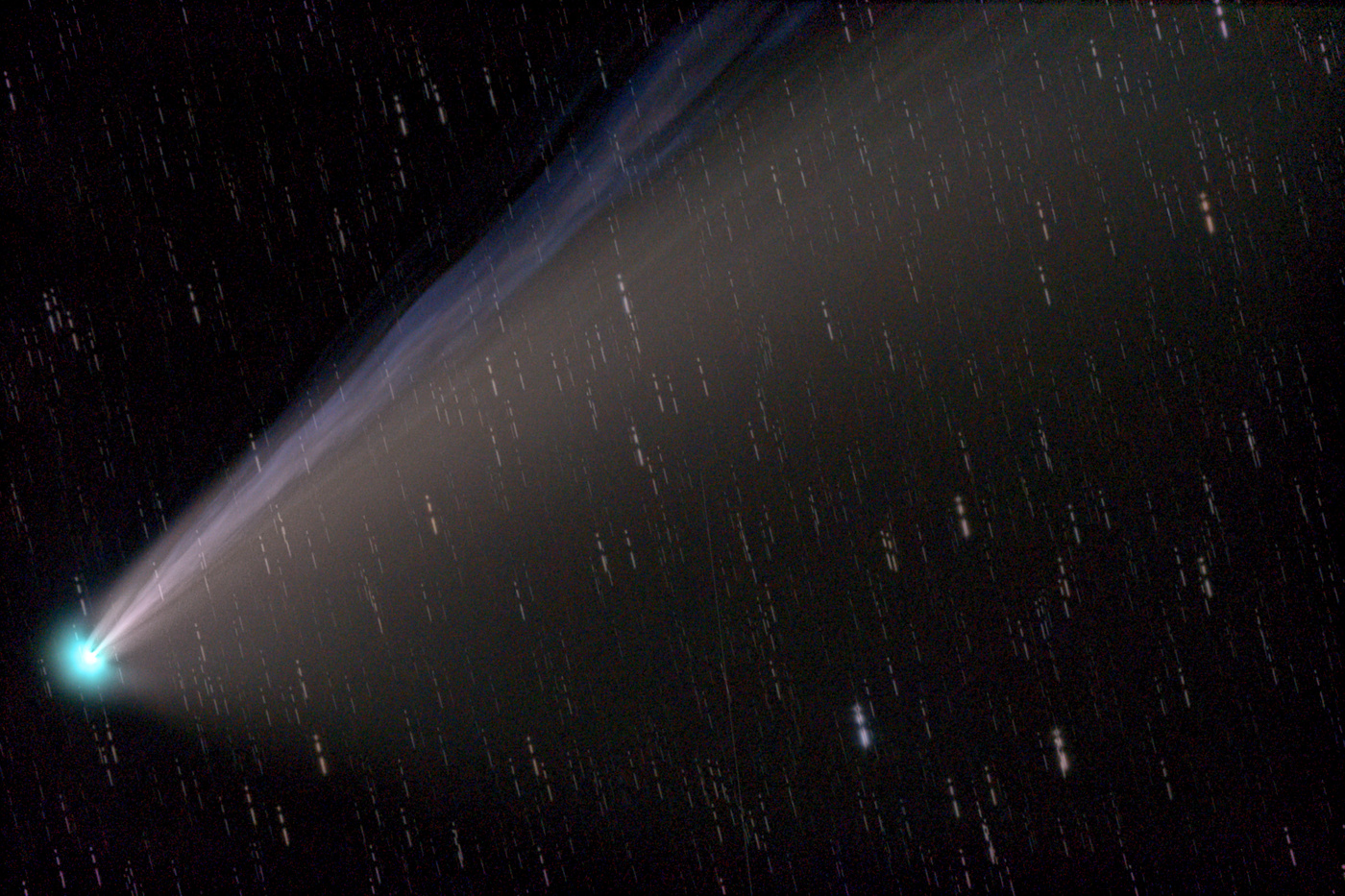Comet C/2020 F3 (NEOWISE)
Comet C/2020 F3 (NEOWISE) was captured between Jul 12 and Jul 25, 2020 using two different instruments. This page presents the results in chronological order where latest images are first. Details about the instruments can be found at the end of this page.Index
Click on the images to jump to the larger version with description.
 Jul 25, 2020. Instrument #2.
Jul 25, 2020. Instrument #2.
 Jul 24, 2020. Instrument #2.
Jul 24, 2020. Instrument #2.
 Jul 24, 2020. Instrument #1.
Jul 24, 2020. Instrument #1.
 Jul 20, 2020. Instrument #2.
Jul 20, 2020. Instrument #2.
 Jul 14, 2020. Instrument #1.
Jul 14, 2020. Instrument #1.
 Jul 14, 2020. Instrument #1. Different white balance.
Jul 14, 2020. Instrument #1. Different white balance.
 Jul 13, 2020. Instrument #1.
Jul 13, 2020. Instrument #1.
 Jul 12, 2020. Instrument #1.
Jul 12, 2020. Instrument #1.
Jul 25, 2020. Instrument #2
Captured after sunset using instrument #2. The single exposures are aligned to the comet. Horizon is bottom.
The picture above is a 1.7° x 1.3° crop. Click on it to see the full view of 2.3° x 1.6°.
Jul 24, 2020. Instrument #2
Captured shortly after sunset using instrument #2. The single exposures are aligned to the comet and rotated 90° CW, i.e. horizon is left.
Field of view is is 2.3° x 1.6°. Click on the picture for a higher resolution.
Total exposure time was 87min and images where taken within a period of 45min using two cameras.
The animation consists in 22 frames. Each frame is the sum of exposures captured within a period of 10min. Temporal shift of the period is 2min per frame.
Jul 24, 2020. Instrument #1
Captured shortly after sunset using instrument #1. Horizon is bottom.
The picture above is a 8.3° x 6.3° crop. Click on it to see the full view of 11.1° x 6.7° at higher resolution.
Single exposures are aligned to comet. Total exposure time was 97 min and images where taken within a period of 50min using two cameras.
Jul 20, 2020. Instrument #2
Captured shortly after sunset using instrument #2. The single exposures are aligned to the comet and rotated 90° CW, i.e. horizon is left. Observation condition where very bad (clouds, low transparency) and many exposures had to be dropped.
Field of view is is 2.3° x 1.6°. Click on the image for a higher resolution.
Total exposure time was 32min and images where taken within a period of 25min using two cameras.
Jul 14, 2020. Instrument #1
Captured shortly before sunrise using instrument #1. The images are rotated 30° CW, i.e. horizon is bottom left.
The picture above is a 4.3° x 3.1° crop. Click on it to see the full view of 8.1° x 5.6°.
Total exposure time was 60 min and images where taken within a period of 30min using two cameras.

Total exposure time was 15 min and images where taken within a period of 7.5min using two cameras.

Color factors relative to the images above (white balance using the stars) are 3.9 for red and 2.2 for green. Colors have not been mixed (no saturation enhancement).
The picture above is a 4.3° x 3.1° crop. Click on it to see the full view of 8.1° x 5.6°.
Single exposures are aligned to comet. Total exposure time was 60 min.
Jul 13, 2020. Instrument #1
Captured shortly before sunrise using instrument #1. The images are rotated 90° CCW, i.e. horizon is right.
Single exposures are aligned to stars. Total exposure time was 15 min and images where taken within a period of 7.5min using two cameras.
Field of view is 8.3° x 6.25°. Click on the image for a higher resolution.

The picture above is a 4.3° x 3.1° crop. Click on it to see the full view of 8.1° x 5.6°.
Jul 12, 2020. Instrument #1
Captured shortly before sunrise using instrument #1. The images are rotated 87° CCW, i.e. horizon is right.
Single exposures are aligned to stars. Total exposure time was 20 min and images where taken within a period of 10min using two cameras.
Field of view is 8.3° x 6.25°. Click on the image for a higher resolution.
Observation Data
Instrument #1| Pixel scale: | 10 arcsec / pixel (at full resolution) |
|---|---|
| Location: | Pulsnitz, Germany |
| Instrument: | Two f=135mm, D=70mm photo lenses |
| Filters: | Bayer CFA + Light pollution filter |
| Pixel scale: | 4 arcsec / pixel (pictures at full resolution) |
|---|---|
| Location: | Pulsnitz, Germany |
| Instrument: | Two f=850mm, D=200mm Newton telescopes |
| Filters: | Bayer CFA |